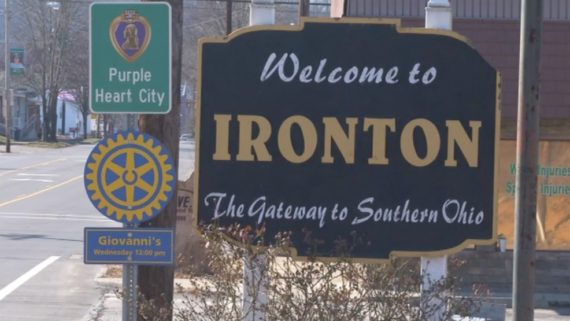
Psychiatrist Dr. Satel spent a year in Ironton helping patients
(6-28-21) Dr. Sally Satel, a practicing psychiatrist who works at a methadone clinic in Washington, D.C., told me over lunch one day about her plan to spend a year in an economically depressed Appalachia town treating patients for addiction.
When she moved to Ironton, Ohio, population 11,200, for twelve months, I wondered what she would discover.
She has now returned to Washington and has written two articles and been interviewed by journalist Nick Gillespie in Reason magazine.
Gillespie writes: Dr. Satel, “challenges conventional theories of addiction that characterize it as a disease like diabetes or Alzheimer’s. Substance abuse, she says, derives from both inborn predilections and a person’s environment, or what she calls ‘dark genies’ and ‘dark horizons.’ Satel stresses that the best way forward is to give individuals tools to make better use decisions while improving their chances to live lives with open-ended futures.”
“You cannot ‘catch’ addiction,” Dr. Satel writes. Her year in Ironton convinced her that drug/alcohol addictions are not so simply explained by saying an individual got hooked because they drank their first beer or swallowed their first opioid. Rather those treating an addiction must spend time trying to uncover the underlying causes – environmental events or what is missing in someone’s life – to truly understand. (Dr. Satel can be reached at slsatel@gmail)
Bravo!
Dark Genies, Dark Horizons: The Riddle of Addiction
Courtesy of Dr. Sally Satel, published in Liberties Magazine
An excerpt:
“The germ theory of addiction: that is my term for one of the popular if misbegotten narratives of how the opioid crisis started. It holds that the epidemic has been driven almost entirely by supply — a surfeit not of bacteria or viruses, but of pills.
“Ask your doctor how prescription pills can lead to heroin abuse,” blared massive billboards from the Partnership for a Drug-Free New Jersey that I saw a few years ago. Around that time, senators proposed a bill that would have limited physician prescribing. “Opioid addiction and abuse is commonly happening to those being treated for acute pain, such as a broken bone or wisdom tooth extraction,” is how they justified the legislation.
Not so.
The majority of prescription pill casualties were never patients in pain who had been prescribed medication by their physicians. Instead, they were mostly individuals who were already involved with drugs or alcohol.
Yes, some actual patients did develop pill problems, but generally they had a history of drug or alcohol abuse or were suffering from concurrent psychiatric problems or emotional distress. It is also true, of course, that drug marketers were too aggressive at times and that too many physicians overprescribed, sometimes out of inexperience, other times out of convenience, and in some cases out of greed.
As extra pills began accumulating in rivulets, merging with pills obtained from pharmacy robberies, doctor shopping, and prescription forgeries, a river of analgesia ran through various communities.
But even with an ample supply, you cannot “catch” addiction. There must be demand — not for addiction, per se, but for its vehicle. My year in Ironton showed me that the deep story of drug epidemics goes well beyond public health and medicine. Those disciplines, while essential to management, will not help us to understand why particular people and places succumb.
It is the life stories of individuals and, in the case of epidemics, the life story of places, that reveal the origins. Addiction is a variety of human experience, and it must be studied with all the many methods and approaches with we which we study human experience.
Dark genies can be exorcised and dark horizons can be brightened. It is arduous work, but unless we recognize all the reasons for its difficulty, unless we reckon with the ambiguity and the elusiveness and the multiplicity of addiction’s causes, unless we come to understand why addicts go to such lengths to continue maiming themselves with drugs — compelled by dark genies, dark horizons, or both — their odds of lasting recovery are slim, as are the odds of preventing and reversing drug crises.
The complexity of addiction is nothing other than the complexity of life.
You can read the entire article courtesy of Dr. Satel by clicking: LibertiesSatel.2020
Here is an excerpt from Gillespie’s interview in Reason with Dr. Satel.
Gillespie: You’ve written that you are “hesitant to call addiction a disease,” especially a “disease of the brain.” Yet addiction, or at least serious substance abuse, seems to be at or near the center of the opioid epidemic.
I prefer calling addiction a symptom rather than a disease. I’m not going to argue with someone, especially someone in recovery, who conceptualizes their problem as a disease. Whatever works for them. But from a conceptual standpoint, I do have a significant problem with the disease model, especially with the formulation of brain disease.
This is something that the National Institutes of Health has been pushing since 1995. I understand why that has appeal, because the more you medicalize something, the theory goes, the more you take it out of the realm of the criminal justice arena, the less you think in terms of punitive responses, and the more you think about therapy and funding for treatment and funding for research. It’s an anti-stigma kind of strategy. I appreciate that and I like those ends. I just don’t feel that they’re accomplished well by reducing one of the most complex behaviors to a slice of brain tissue. I’m not going to deny any of the neurobiological facts or the very dramatic and eye-catching brain scans that they use—of course the brain has changed in addiction. So that’s all true. But the point is the brain isn’t changed to the point where a person can no longer make decisions.
If my choices are saying addiction is a disease vs. it’s a sin or it’s a crime or it’s evidence of moral failing, well, damn, I’m going to pick disease. But it’s a condition, a behavioral phenomenon that responds to contingencies, that responds to consequences, and that people engage in for -reasons.
In Ironton and D.C., there’s not one patient who walked into a clinic and didn’t say that they were there because their wife was going to leave them, their boss is going to fire them, their probation officer is going to punish them, or their kid’s going to hate them. The point is they’re responding to something in their environment. If I had Alzheimer’s disease, which is to me a classic brain pathology, it wouldn’t matter what was going on in the environment or in my cognition or in my view of myself.
If you talk to someone who drinks too much or uses drugs too much—and I emphasize the too much, because that’s the problem—I’d say to them, “Why are you doing that? What’s going on?” That question makes sense. That question can be answered in existential terms. If I said to a person with Alzheimer’s disease, “Why do you have Alzheimer’s disease?” maybe they’ll talk to me about [brain] plaques and tangles and neural pathology. The answer doesn’t come in the form of existential language. That’s very important, because that goes to why people use and how we get them out of it.
To keep reading:
What It’s Like To Treat Opioid Addiction in Appalachia: Psychiatrist Sally Satel on her eye-opening year at a clinic in Ironton, Ohio, published in Reason Magazine.
You also might like: The Truth about Painkillers by Sally Satel published in National Affairs.
About the author:
Sally Satel, M.D., a practicing psychiatrist and lecturer at the Yale University School of Medicine, examines mental health policy as well as political trends in medicine. Her publications include PC, M.D.: How Political Correctness Is Corrupting Medicine (Basic Books, 2001); The Health Disparities Myth (AEI Press, 2006); When Altruism Isn’t Enough: The Case for Compensating Organ Donors (AEI Press, 2009); and One Nation under Therapy (St. Martin’s Press, 2005), coauthored with Christina Hoff Sommers. Her recent book, Brainwashed – The Seductive Appeal of Mindless Neuroscience (Basic, 2013) with Scott Lilienfeld, was a 2014 finalist for the Los Angeles Times Book Prize in Science. Follow Sally Satel on Twitter. She is known for being a political conservative.

Dr. Sally Satel, photo courtesy of the American Enterprise Institute.



